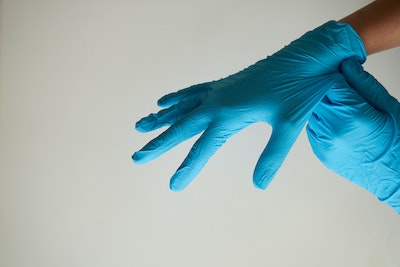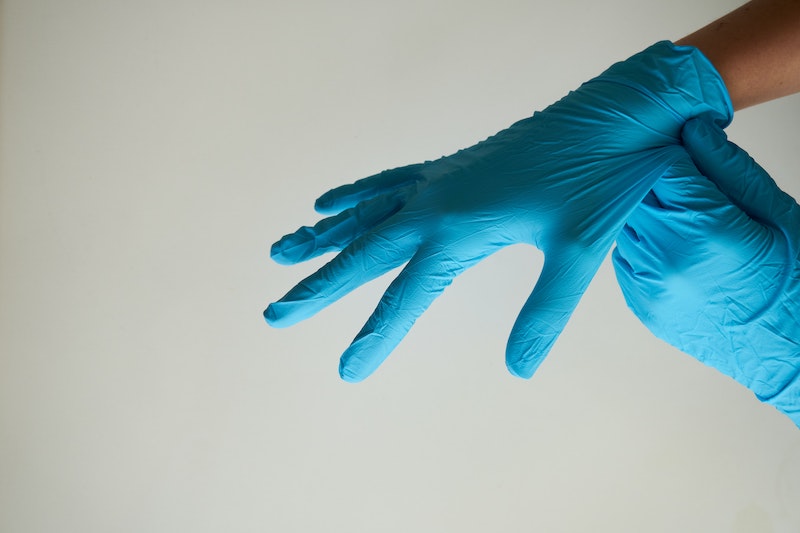How to Safely Clean Up Blood
Do you need to know how to clean up blood? How do you know when it’s safe to clean up blood at your home or office space? There are many things that people don’t realize about cleaning up blood. It is important for everyone who cleans up blood, especially those with sensitive skin, to take precautions so they don’t get an infection from cleaning the mess.
So, is it safe to clean up blood? The answer depends on the situation. In most situations, it is safe to clean up blood as long as you wear protective gear including gloves and a mask. You should never clean up blood at an active crime scene or an accident as a professional will need to oversee this process.
This blog post will cover what you need to know about cleaning up blood safely as well as safety tips for cleaning it. We’ll also provide steps on how to clean up a bloody mess and list reasons why you might call in a biohazard expert to safely clean up the blood.
Steps to Clean Up Blood Safely
The first thing you need to do is contain the area or spot that’s covered in blood, if possible. If a person has been cut and bleeding profusely, sit them down and try your best not to move their wound too much as this can cause more bleeding. Don’t let the person stand up or walk around until you have wrapped a bandage tightly to stop any further bleeding.
Contain the Blood Spill
You can then carefully put down newspaper, paper towels, garbage bags, and plastic sheeting to contain the blood spill. While wearing protective gear including gloves and a mask for your mouth area so none of their blood gets into your mouth or nose, gently wrap up the bloodied material and tie it off. If you need to move the bloody mess somewhere else for cleaning, use plastic sheeting to contain any remaining blood in one area.
Begin the Cleaning Process
Once you have contained all of the affected areas where blood has spilled, you can begin the cleaning process. You’ll need to use a household bleach and water mixture to clean up blood safely.
Be sure that it is mixed at a one-part bleach and nine-part water solution so as not to irritate your skin too much or damage household surfaces such as countertops or flooring materials if the blood has gotten everywhere.
You can also add a few drops of dishwashing liquid to the mix so it will have some suds and get rid of any debris mixed in with the blood, such as dirt from outside or other substances that may be on your skin if you’ve been cut accidentally while working around a bloody mess.
Once this solution is mixed, pour it out generously over any affected areas. You’ll need to be sure that all of the blood is gone and if it’s on a wall or flooring material such as hardwood floors or concrete, you can use paper towels to wipe up the mess effectively so there are no stains left behind from dried blood.
Make Sure to Dry the Area
If the area is still damp, you can use a wet vacuum and then let it dry to get rid of any potential infectious agents in the blood.
In certain situations such as if there are large amounts of blood or other bodily fluids involved, consider calling a biohazard expert for help with cleaning up your mess safely.
Safety Tips for Cleaning Up Blood
If you find yourself in a situation where there is blood everywhere, keep these safety tips for cleaning up blood in mind you don’t have to worry about getting an infection or causing more damage than good by not properly disinfecting.
Protect Yourself
 Keep your hands protected at all times with surgical gloves when possible and avoid contact with bodily fluids if they are not yours as this can cause illness quickly.
Keep your hands protected at all times with surgical gloves when possible and avoid contact with bodily fluids if they are not yours as this can cause illness quickly.
You should also wear protective gear such as goggles or face masks that cover nose and mouth areas for added protection against infectious agents like HIV that may be present in other people’s blood from cuts on their skin.
Wear disposable shoe covers over any shoes you’re wearing before entering into an area of heavy bloody messes too if it’s coming from an unknown person’s blood as this can reduce the potential risk of getting another illness.
Use Cleaning Chemicals Safely
Using a household bleach mixture to clean up bloody messes is one way to disinfect surfaces but you should always read carefully on any cleaning product packaging first before using it so that you avoid accidentally mixing them or with other chemicals in your home which could be hazardous for yourself or others too.
Know When to Call a Biohazard Expert
You may find yourself in situations where there are heavy amounts of blood everywhere that need special attention such as if someone has a serious injury at work or due to criminal activity like a murder.
In these cases, it’s best to call a biohazard professional who can clean up the mess safely while also protecting your home from further damage so you don’t have to worry about being sued because of not properly cleaning up after blood has been spilled at your house or business location either due to negligence on your part or otherwise.
How to Remove Blood Stains
During the accident or the following cleanup process, you may find that you have bloodstains on your clothing, flooring, or furniture. Although it may be tricky, it is possible to remove blood stains from most surfaces.
Removing Blood Stains from Clothing
A high vinegar solution is one of the most effective ways to remove blood stains from your clothing. Just add equal parts white distilled vinegar and water into a spray bottle, then lightly mist the stain with this mixture. Let it sit for several minutes before laundering as usual in cold or warm water with mild laundry detergent.
The Enzyme Cleaner: Nature’s Miracle
Another product you can use to remove blood stains from clothes is The Enzyme Cleaner: Nature’s Miracle. This enzyme cleaner breaks down organic matter such as the proteins in blood so it will lift off of your clothing and into a solution that then rinses out easily with water.
Removing Blood Stains from Carpeting or Rugs
There are several different products on the market which advertise themselves as being effective for removing blood stains from carpeting or upholstery, but they may not work well for every situation.
If a stain has been there for an extended period, sometimes all it takes is a thorough cleaning with a household detergent like Tide® before trying one of these specialty cleaners. Be sure to check any solution you’re using on an inconspicuous spot of your carpeting or upholstery before applying it to the entire area.
Removing Blood Stains from Hard Surfaces
Stain Solver is another product that may be able to help remove blood stains, but you’ll need to mix it with warm water in a spray bottle before spraying it onto any affected areas. Let this solution sit for several hours – or even overnight if needed – before scrubbing at the stain gently using a toothbrush or other small brush so as not to damage porous materials when trying to clean them up.
Once done, rinse thoroughly with fresh water and let dry completely before allowing anyone back into these rooms again until they fully dry in case there are any fumes from the solution that remain.
Important Things to Avoid After a Blood Spill
There are several important things you should avoid following a blood spill. A few of these include:
- Never clean up blood at an active crime scene or an accident before proper authorities have been notified.
- Avoid contact with blood for 48 hours if possible so you don’t risk getting an infectious disease.
- Try disinfecting all surfaces using household bleach and water mixture in one, let sit before rinsing thoroughly.
- Call a biohazard professional right away when dealing with high amounts of blood that need special care.
- Don’t dispose of old blood-stained rags by simply throwing them away anywhere.
- Avoid using a steam cleaner on any surface that had blood spilled onto it until you have disinfected the area with bleach or some other type of cleaning solution first to prevent spreading infectious disease around your home.
- Do not use ammonia-based cleaners on surfaces where there was blood. This can cause dangerous fumes which will be harmful to breathe in when trying to clean up after someone has an injury at work or elsewhere. Call experts for more information about items like these and what they can do for heavy-duty jobs like this one too which require special attention due to their size.
In Conclusion
Whether due to an accident or criminal activity, cleaning up blood is a tricky job. We hope you never find yourself in this situation. However, there are several things you must to do ensure the safety of yourself and those around you.
If you feel as if the blood spill is too expansive, it is wise to hire a biohazard expert to eliminate further accidents.

